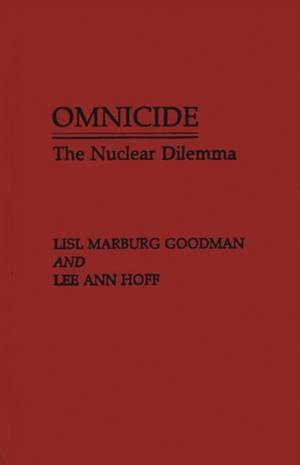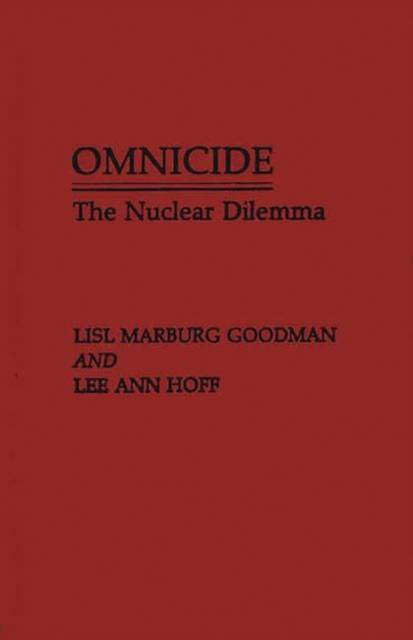
- Retrait gratuit dans votre magasin Club
- 7.000.000 titres dans notre catalogue
- Payer en toute sécurité
- Toujours un magasin près de chez vous
- Retrait gratuit dans votre magasin Club
- 7.000.0000 titres dans notre catalogue
- Payer en toute sécurité
- Toujours un magasin près de chez vous
Description
This pioneering examination of the nuclear threat, written for both the interested general reader and the student of war and peace issues, blends broad philosophical/theoretical themes and themes in the peace and conflict literature with the results of the authors' extensive survey research in the United States and Europe. While never losing sight of the threat of a nuclear holocaust, authors Lisl Goodman and Lee Ann Hoff argue that it is possible to turn the tide of aggression and destruction and, in the process, create an utterly different human society. They challenge the myth of innate aggression which sees war as inevitable; present a critical examination of the psychodynamic, sociocultural, and political-economic factors which have led to current inaction in the face of the nuclear threat; and investigate the link between the insecurities of life in the nuclear age and the increasing rate of youth suicide, apathy, disengagement, and the general devaluation of life without a secure future.
Divided into three parts, the book begins by analyzing how we got to where we are today. The authors show that clinging to the outdated notion that aggression and violence are inevitable responses to human conflict has led to an abdication of individual responsibility and placed the fate of the planet in the hands of very few individuals. This abdication has led to feelings of powerlessness and desensitization as well as to a denial of the nuclear threat, a syndrome the authors label omnicidal. In Part Two, the authors present findings from several studies conducted in North America and Europe which reveal the pervasiveness of fear, denial, a fatalistic world view, and omnicidal personality patterns. The final section presents social change strategies that can be adopted at the individual, family, and sociopolitical levels to promote peace. The authors place particular emphasis on the pivotal role of childrearing and education patterns that emphasize cooperative behavior and critical thinking about global issues.Spécifications
Parties prenantes
- Auteur(s) :
- Editeur:
Contenu
- Nombre de pages :
- 176
- Langue:
- Anglais
Caractéristiques
- EAN:
- 9780275932985
- Date de parution :
- 27-09-90
- Format:
- Livre relié
- Format numérique:
- Genaaid
- Dimensions :
- 140 mm x 216 mm
- Poids :
- 371 g

Les avis
Nous publions uniquement les avis qui respectent les conditions requises. Consultez nos conditions pour les avis.






